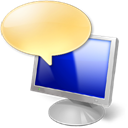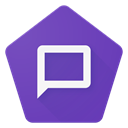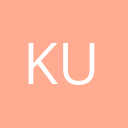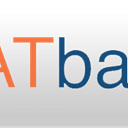Uncovering the Best NVDA Alternatives for Enhanced Accessibility
NVDA (NonVisual Desktop Access) is a powerful, free, and open-source screen reader that empowers blind and vision-impaired individuals to access and interact with the Windows operating system and countless third-party applications. Its extensive features, including support for popular browsers, email clients, office programs, a built-in speech synthesizer, braille display compatibility, and portable operation, have made it a cornerstone of digital accessibility. However, users often seek NVDA alternative solutions due to specific needs, platform preferences, or a desire to explore different feature sets. This article delves into the top alternatives to NVDA, helping you find the perfect screen reader for your unique requirements.
Top NVDA Alternatives
Whether you're looking for commercial solutions, built-in options, or open-source projects for different operating systems, there's a robust NVDA alternative out there. Let's explore some of the most prominent contenders.

JAWS
JAWS (Job Access With Speech) is a commercial screen reader software for Windows users whose vision loss prevents them from seeing screen content. It reads aloud what's on the PC screen, offering a comprehensive and professional alternative to NVDA, particularly for those seeking extensive support and advanced features in a commercial package.

Microsoft Narrator
Microsoft Narrator is a screen reader included directly in Microsoft Windows, making it a readily available and free NVDA alternative for Windows users. Its integration within the operating system provides a convenient and basic accessibility solution without the need for additional downloads or installations.

Thunder
Thunder is an award-winning free screenreader talking software for people with little or no sight. Compatible with Windows 7, Vista, or XP, Thunder offers accessibility, multiple languages, and portable functionality, making it a versatile and free NVDA alternative for a range of Windows environments.

Orca Screen Reader
Orca is a free, open-source, flexible, and extensible screen reader that provides access to the graphical desktop via speech and refreshable braille, specifically for Linux users. As an open-source project for Linux, Orca stands out as a strong NVDA alternative for those operating outside the Windows ecosystem.

TalkBack
TalkBack is Google's screen reader, built into many Android phones and tablets. This free Android feature provides text-to-speech capabilities, making it an essential and integrated NVDA alternative for mobile accessibility on Android devices.

Kurzweil
Kurzweil is a commercial application that scans text and reads it aloud, offering additional functions like highlighting and fill-in-the-blank features. Available across multiple platforms including Mac, Windows, Android, iPhone, Chrome OS, Android Tablet, and iPad, Kurzweil offers a comprehensive text-to-speech NVDA alternative for a wide array of devices.

ATbar
ATbar is a free, open-source, cross-browser toolbar designed to help users customize how they view and interact with web pages. While not a full screen reader like NVDA, ATbar offers valuable accessibility features for web browsing, serving as a complementary or specialized NVDA alternative focused on web content.

Window-Eyes
Window-Eyes was a commercial adaptive technology solution for blind and visually impaired Windows users, known for its stability. Offering accessibility and text-to-speech features, it served as a robust commercial NVDA alternative for those seeking a premium Windows screen reader experience.
Choosing the right screen reader is a deeply personal decision, influenced by your operating system, budget, specific visual impairment, and desired features. While NVDA remains an excellent free and open-source option, exploring these alternatives can lead you to a solution that better fits your individual needs, whether it's a commercial product with extensive support, a built-in system feature, or another open-source project tailored for a different platform. We encourage you to explore these options to find the best fit for your digital accessibility journey.